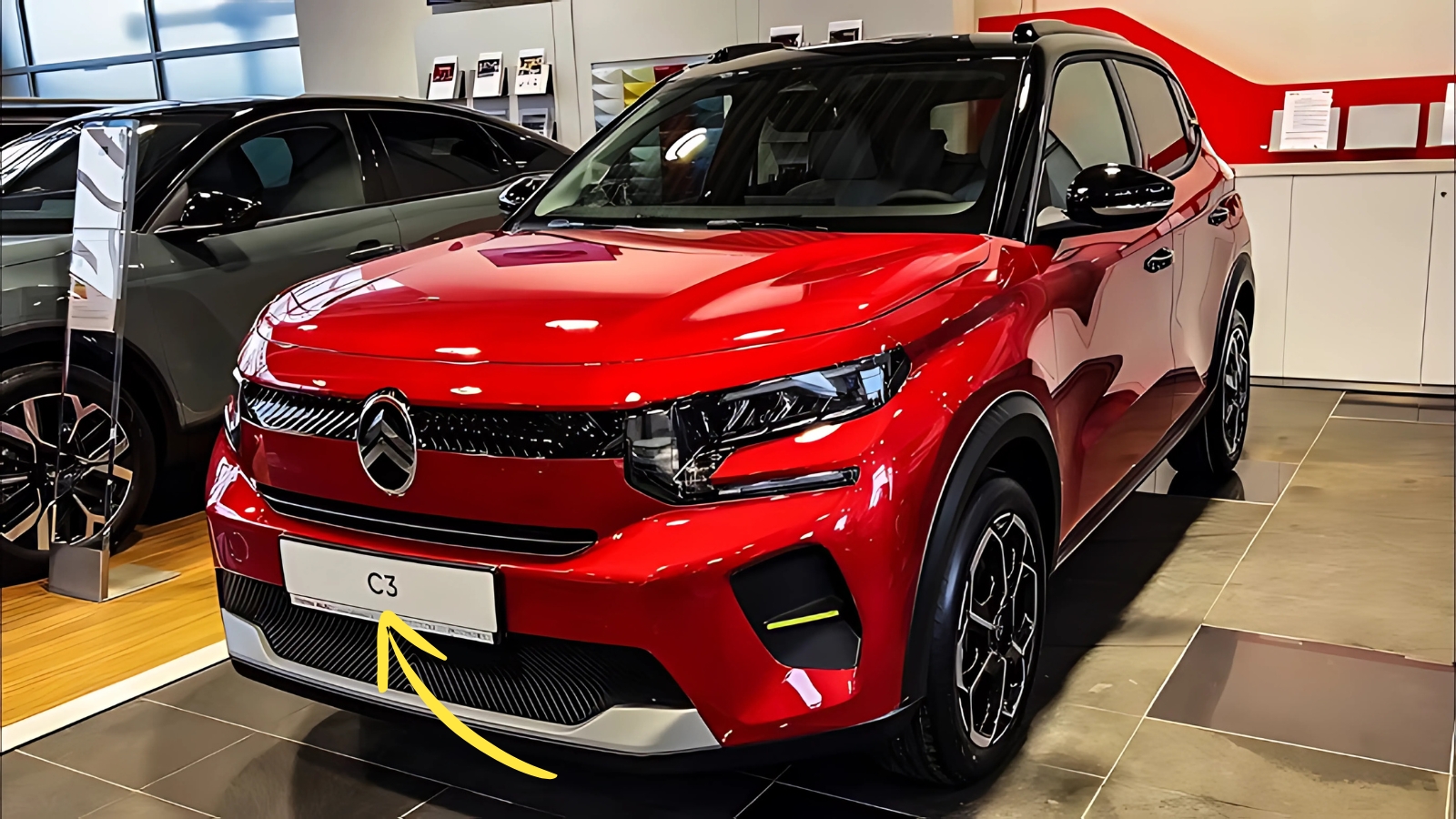Citroen C3 : When Citroen announced their return to India with the C3, automotive enthusiasts wondered whether French quirkiness could find a home in a market dominated by predictable, value-focused vehicles. The answer arrived in the form of a hatchback that refused to follow conventional wisdom about what Indian buyers supposedly wanted. This wasn’t just another European brand trying to establish presence in India – it was Citroen’s bold experiment in bringing authentic French design philosophy to roads where practicality typically trumps personality. The C3 challenges every assumption about affordable cars, proving that distinctive character and thoughtful engineering can coexist with accessible pricing. But can this unconventional approach really resonate with Indian buyers who’ve grown accustomed to feature-packed, specification-heavy alternatives?
Citroen C3 Design Rebellion: Embracing French DNA in Indian Context
The C3’s exterior design immediately announces its foreign origins through proportions and details that feel refreshingly different from typical Indian market offerings. Citroen’s designers avoided the temptation to create another generic hatchback, instead delivering something that looks unmistakably French while remaining practical for Indian conditions. The result is a vehicle that photographs beautifully and stands out in parking lots filled with similar-looking competitors.
The front fascia showcases Citroen’s distinctive design language through the split-level lighting arrangement and characteristic chevron grille pattern. The headlamp units integrate LEDs effectively while maintaining the quirky aesthetic that defines modern Citroen vehicles. The bumper design incorporates functional air intakes and fog lamp housings that enhance both performance and visual appeal.
What sets the C3 apart is the fearless use of design elements that other manufacturers might consider too adventurous for the Indian market. The floating roof design creates visual lightness, while the distinctive C-pillar treatment adds character without compromising rear visibility. The wheel arch extensions and plastic cladding serve practical purposes while contributing to the rugged aesthetic that appeals to adventure-minded buyers.
The color palette deserves special recognition for its boldness. Shades like Zesty Orange and Polar White create striking combinations with the black roof option, while more conservative buyers can choose from sophisticated options like Platinum Grey. The dual-tone combinations available across variants add visual drama that helps the C3 express personality in ways that many competitors avoid.
Body cladding throughout the vehicle serves both aesthetic and practical functions. Unlike many vehicles where such elements feel superficial, the C3’s cladding provides genuine protection against parking lot dings and minor off-road encounters while enhancing the crossover-like appearance that Indian buyers increasingly prefer.
Interior Philosophy: Minimalism Meets Functionality
The C3’s cabin design reflects European sensibilities that prioritize essential functionality over feature bombardment. The dashboard layout emphasizes clean lines and logical control placement rather than impressive button counts or overwhelming digital displays. This approach creates an environment that feels sophisticated through restraint rather than excess.
Material selection throughout the interior demonstrates thoughtful choices rather than obvious cost-cutting. Hard plastics are used strategically in areas where durability matters most, while soft-touch surfaces appear where occupants interact frequently. The overall fit and finish quality feels consistent with the vehicle’s positioning without trying to exceed realistic expectations.
Seating comfort represents one of the C3’s genuine strengths. The front seats provide excellent support for extended driving, with cushioning that strikes an ideal balance between firmness and comfort. The seat fabric quality feels premium and durable, while the design incorporates subtle French styling cues that reinforce the vehicle’s character.
Technology integration takes a refreshingly straightforward approach. Rather than overwhelming users with complex interfaces, Citroen focused on smartphone connectivity that works reliably and intuitively. The infotainment system supports essential functions without unnecessary complexity, while the air conditioning controls remain physical buttons that operate predictably.
Storage solutions throughout the cabin demonstrate practical European thinking. Cup holders are sized appropriately for actual beverages, door pockets accommodate real-world items securely, and the glove compartment provides adequate space without unnecessary subdivisions.
Performance Character: European Refinement Meets Indian Reality
The C3’s 1.2-liter naturally aspirated petrol engine produces 82 horsepower, figures that emphasize drivability over impressive specification sheets. The engine character reflects European tuning preferences that prioritize smooth operation and linear power delivery rather than aggressive performance peaks that might impress in showroom demonstrations.
Real-world driving reveals the C3’s European heritage through refined engine operation and progressive power delivery. The powerplant operates quietly across most of the rev range, with minimal vibration reaching the cabin even during enthusiastic driving. The throttle response feels calibrated for smooth urban driving rather than aggressive acceleration.
The five-speed manual transmission operates with typical European precision, offering well-defined gates and satisfying mechanical feel that makes gear changes genuinely enjoyable. The clutch action feels appropriately weighted for Indian traffic conditions while maintaining the progressive engagement that experienced drivers appreciate.
Citroen C3 Market Challenge: Authenticity Versus Expectations
Citroen positioned the C3 as a premium hatchback with pricing starting around ₹6.16 lakhs, reflecting the engineering investment and imported component costs. This positioning challenges buyers to value distinctive design and European engineering over feature lists and specification comparisons that dominate typical purchase decisions.

